#medieval period
Text

Armor of Ferdinand I, Holy Roman Emperor, (Detail of Breastplate), 1549
#breastplate#medieval core#medieval#chivalry#art#gothique#vintage#goth#weird aesthetic#antique#photography#religious#knight#knightcore#medieval period#armor#antique armoire
973 notes
·
View notes
Text

From River to the Sea Palestine Will be Free and it’s History / Culture Will Never be Erased!
🇵🇸🇵🇸🇵🇸
#history#palestinian keffiyeh#headscarf#palestine#keffiyeh#fashion history#traditional clothing#middle east#medieval period#rural life#palestinian history#fashion#yasser arafat#cottagecore#ruralcore#anti colonialism#traditional culture#clothing history#palestinian culture#free palestine#ottoman empire#islamic golden age#middle eastern history#1930s#1960s#nickys facts
98 notes
·
View notes
Text

And to that, I hold. I would rather share one lifetime with you than face all the ages of this world alone.
(Original photo from medieval festival in Belgrade, Serbia - ig: @sarcasmaddict_ @_witch_king_of_angmar )
#15th century#living history#medieval#reenactment#reenactor#medieval clothing#medieval knight#fantasy#photoshoot#photo edit#princesscore#medieval fashion#medievil#medien#poppy and casteel#medieval painting#medieval period#medieval poetry#medieval peasant#medieval dress#tailoring#sewing#embroidery#fabric#instatumblr#instalike#instagram#aesthetic#lord of the rings
117 notes
·
View notes
Text
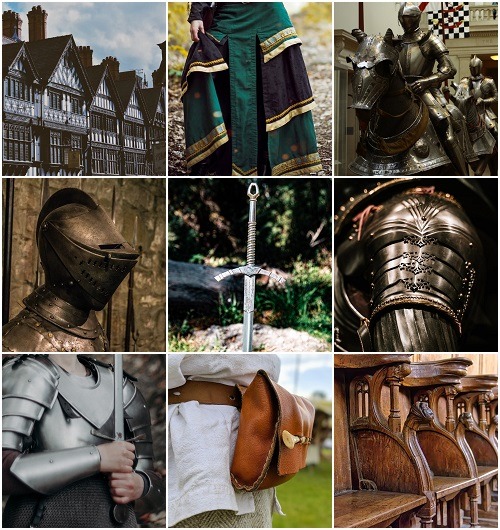
Aesthetics: Medieval
It's a fine line between magic and science. In medieval times, science was magic.
#dan fogler#medieval#medieval aesthetic#Medieval moodboard#knight aesthetic#Knight moodboard#Knights#Middle ages#medieval armor#medieval history#medieval knight#medieval costume#medieval period#medieval inspired#medieval europe#medieval era#History#history aesthetic#History moodboard#Historical era#moodboard#aesthetic#character aesthetic#character inspiration#character inspo#character moodboard
46 notes
·
View notes
Photo

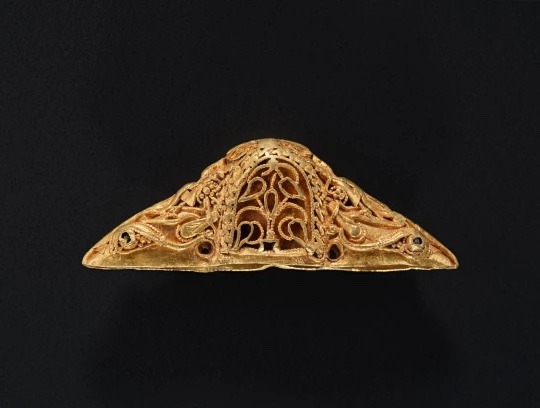
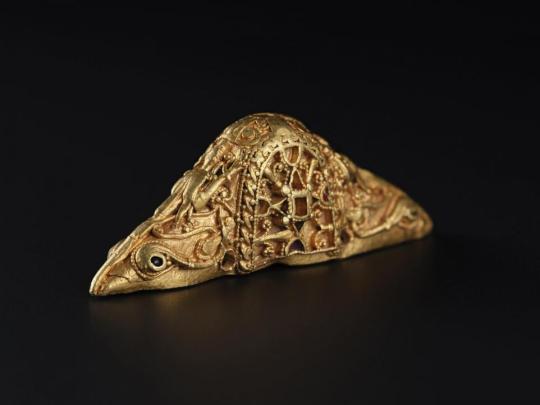
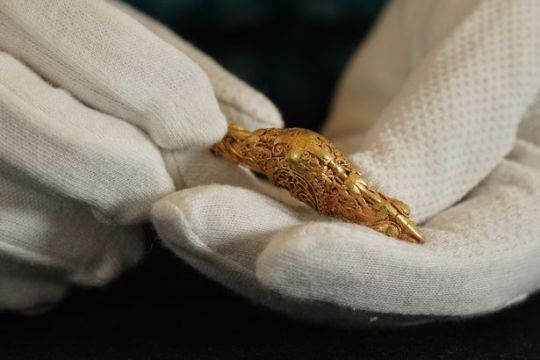

A Very Rare Gold Sword Pommel Discovered by a Metal Detectorist in Scotland
The pommel, which is about 1,300 years old, was found in 2019 and was declared to the Scottish Treasure Trove unit.
The gold decoration which would have sat at the top of a sword handle measures 5.5cm wide, weighs 25g and was valued at about £30,000.
The find has been described as "hugely significant".
Dr Alice Blackwell, senior curator of medieval archaeology and history at National Museums Scotland (NMS), said goldwork from this period was "virtually unknown" anywhere in the UK.
She said it showed the spectacular skill and craftsmanship of the early medieval period.
The pommel is thought to date from about 700 AD.
The solid gold object is encrusted with garnets and intricate gold work which feature religious motifs and fantastical creatures.
The discovery was made at Blair Drummond towards the end of 2019 but NMS said that due to restrictions during the pandemic decisions about its acquisition were delayed.
It was allocated to them on recommendation of the Scottish Archaeological Finds Allocation Panel.
Dr Blackwell said its archaeological value was due to what it told us about important cultural, political and artistic interactions in northern Britain at this time.
She said its decoration combined elements from both Anglo-Saxon England and the kingdoms of Early Medieval Scotland.
"Early medieval Scotland is a really interesting period," Dr Blackwell said.
"You have a number of culturally distinct kingdoms and the pommel's design has taken from the different cultures and melded them together "
That melding of different cultural styles is known as "insular art" style, which was made famous by illuminated manuscripts such as the Lindisfarne Gospels.
Dr Blackwood said this fusion of styles had made it hard to determine where exactly it was made and whom it may have belonged to.
However, she said it potentially could have belonged to royalty due to the higher standard of goldwork the pommel had compared with other goldware found in this period.
"In a way this is the start of the artefact's journey," Dr Blackwell said.
"A lot of research and work is still to be done to uncover what stories it can tells us about the political and cultural landscape of Northern Britain at this time."
#A Very Rare Gold Sword Pommel Discovered by a Metal Detectorist in Scotland#gold#treasure#metal detector#archeology#archeolgst#ancient artifacts#history#history news#ancient hoistory#ancient culture#ancient civilizations#medieval period
345 notes
·
View notes
Text
After some (very justified) criticism to my definition of prehistoric (see tags) here’s another poll:
#ain’t no one got time for the sub classification of the modern period. I’m sorry guys#I’m also not dividing the Palaeolithic or the Iron Age sooo#archaeology#archeology#poll#polls#polling#Palaeolithic#stone age#paleolithic#Mesolithic#Neolithic#Bronze Age#chalcolithic#iron age#viking age#migration period#medieval period#middle ages#modern period#own post#prehistory: before written record. my geographical framework: southern Scandinavia. south Scandinavian prehistory: up to viking age
101 notes
·
View notes
Photo





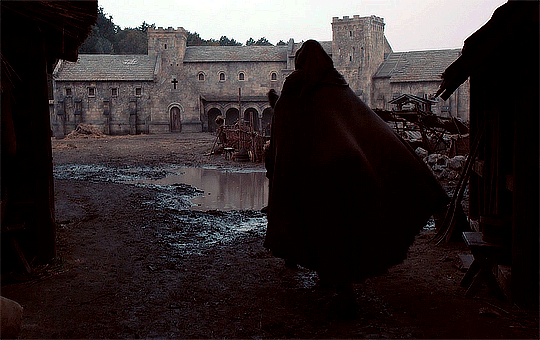


The Pillars of the Earth (2010)
Episode 1
#the pillars of the earth#matthew macfadyen#prior philip#tvedit#tvgifs#tv#tvseries#tv series#tvshow#tv show#miniseries#historical drama#perioddramagifs#perioddramaedit#perioddrama#period drama#medieval#medieval monks#medieval era#medieval period#british actors
124 notes
·
View notes
Text
just been scrolling through the beinecke library's digital manuscript collection and saw this gay little dude over a landscape staring at me

Source: Hours, use of Rome c. 1500. Published in Lyons, written in Latin and Middle French. Book of Hours in Latin with full calendar in French. From Yale's Beinecke Rare Book and Manuscript Library Digital Collections.
5 notes
·
View notes
Text
Please help me find a post for a class
a while ago i saw a post about a medieval text instructing parents to, if their child learning to walk tripped over an object, scold the object in question. i really want to mention it in the short historical part of a presentation for my class on Child and Teenager Rights, but tumblr being tumblr, i haven't been able to find it. i would REALLY appreciate if someone were able to send it my way, esp by wednesday evening
#childhood#child#children's rights#childrens rights#rights#teen rights#teenager rights#medieval#medieval period#medieval era#medieval writing#medieval text#parenting#parenting advice#medieval parenting#law#laws#law class#law major#law school#law university#law student#history#medieval history#historian#medieval historian#baby#babies#toddler#toddlerhood
11 notes
·
View notes
Text
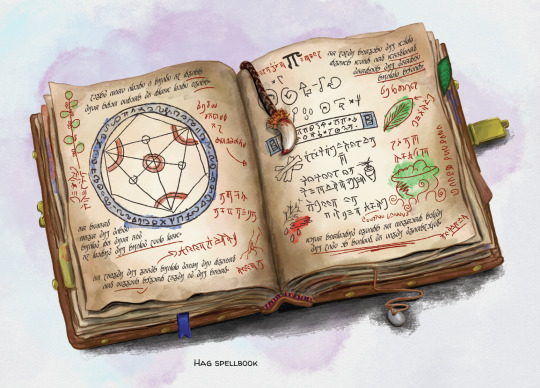
Hag Spellbook
Filled with arcane instructions, this book teaches vile spells and potions only a hag could love.
These pages describe how to craft a potion capable of transforming the drinker into a tree in a matter of days (read my careful translation from the original Sylvan and Draconic here).
Get the book for free/PWYW on DM’s Guild.
19 notes
·
View notes
Photo

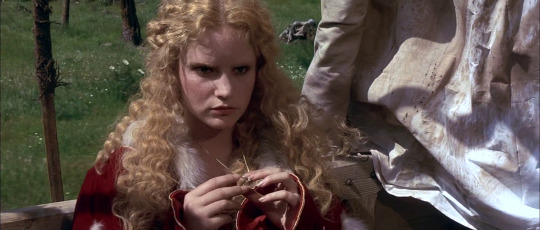
Flesh+Blood (1985), dir. Paul Verhoeven
#Flesh and Blood#flesh+blood#paul verhoeven#jennifer jason leigh#medieval#medieval aesthetic#medieval period#period drama
35 notes
·
View notes
Text
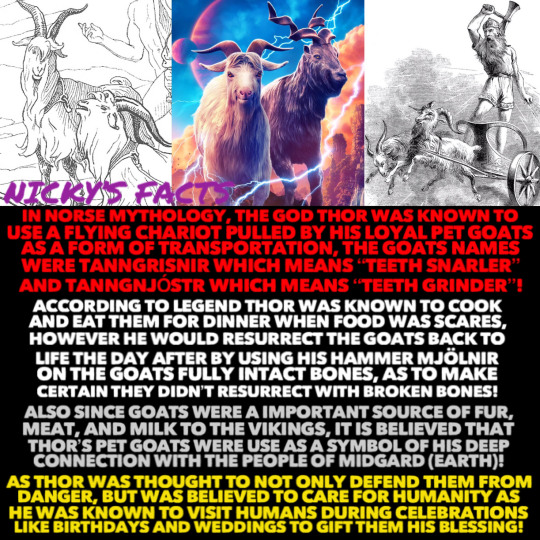
All hail Thor, a man of the people and lord of goats!
🐐🌩🐐
#history#thor goats#vikings#norse mythology#thor#thor love and thunder#tanngnjóstr#tanngrisnir#viking history#denmark#goats#medieval history#marvel comics#mythology#medieval period#mythical animals#marvel#myth#love and thunder#norse folklore#scandinavian#marvel movies#medieval#viking culture#danish history#nickys facts
1K notes
·
View notes
Text
There appears to have been an extended period of coexistence between Christians and Muslims in the region.
“Christian monasteries and churches were in use in some places until the ninth century,” says Michael. “It’s possible that the mosque we uncovered in Rahat was visited at the same time as Christian places of worship nearby.”
In Israel’s Negev Desert has revealed evidence of the effects of Islam in the region between the seventh and ninth centuries A.D. Researchers discovered multiple buildings dating to the Umayyad (A.D. 661–750) and Abbasid (A.D. 750–1258) periods, including a mosque dating to the seventh or eighth century A.D. Roughly 400 yards away, the team discovered the ruins of a palatial Islamic-style building thought to have belonged to a local ruler, featuring walls decorated with frescoes and stone hallways arranged around a central courtyard. Beneath the courtyard, the team unearthed a 10-foot-deep, rock-hewn cistern system.
#history#archeology#archeologicalsite#discovery#early christianity#muslim#mosques#monastery#holy sight#Umayyad caliphate#medieval period#israel#religious coexistance
4 notes
·
View notes
Text
François Villon: The Poetic Thief and Murderer
Those who have been following me a while might already know I have a slight obsession with a certain, mysterious poet from the 1400s: François Villon. He was a French poet, many of his surviving works are in thieves jargon (Les Mis fans, remember the argot tangent?) though his greatest, fortunately, are in regular old French! I fell down a rabbit hole about him again and decided it’s finally time for me to do a good old fashioned infodump.
Okay so, remember what I said about thieves jargon? Yes, this poet was a thief with smash hits such as: robbing a chapel and murdering a priest by beating his head in with a rock (and stabbing! Love a good stabbing).

Most of what we know about Villon comes from court records and his own writing.
To start, Villon's name wasn't Villon! He was raised by Guillaume de Villon but that wasn't his father, his real name was either François de Montcorbier or François des Loges. Two names? Where did those come from? When he was exiled for that silly little murder he sought pardon from King Charles VII . . . Twice. The first time under one name and the second under the other. Apparently, the king preferred François des Loges, as he was granted the pardon but we'll get to the details of that later. We don't actually know for certain which one his real, legal name was (assuming it was one of those) but he referred to himself as Villon in all of his poetry.
We know he was born 1431-1432 and that he got his bachelor's from the University of Paris. It was there that he made friends that would later become his rag tag gang of thieves. 1455 is the first crime we have on record from Villon (to math for you: he would have been around 23).
You would think his first crime on record would be a palette cleanser, petty thieving, maybe? But no – he murdered a priest. The priest's name was Surmoise, and he was accused (after his death) of striking Villon first, basically so that Villon could say he stabbed him and bashed his head in with a rock out of self defense. Whether Surmoise did start it or not we can't ever know for sure but considering what we know about Villon and what can we can usually assume about a priest . . . Well.
Surmoise succumbed to the injuries and Villon, in turn, was banished. This banishment was short lived, the pardon that was previously mentioned occurred in 1456, the very year after the murder! One might wonder how the hell he managed to get the king's pardon, considering he killed a fucking priest, and the reason is the most 15th century, bat shit wild thing: Villon claimed in his petition that Surmoise forgave him before his death. The murderer's word was taken as truth and well, if the victim can forgive the murderer then can't the law, too? His exile was ended and Villon returned, ready to live an upright, noble life as the lyrical poet that he is.
I'm just kidding, HE ROBBED A CHURCH
Do you see a theme yet? First he murders a priest and then,,,, he robs a church. You might hope he at least waited a while after returning before he got back to business but no, he robbed the church around Christmas in 1456, the same year as his return. He was not wasting time and I like to imagine that he chose that time of year on purpose, coincidences are just adding on up when it comes to him and his issue with Christianity. After the robbery, he fled Paris and the May of next year police began tracking down his crew. One friend made the claim that Villon was the leader of their gang of thieves and after another year, Villon was arrested and then banished from the city again.
Before his banishment while he was imprisoned, he wrote one of his more famous poems Le Lais (The Legacy) (there is a book with translations of his poetry though it isn't free to access online) in which he comedically bequeathed his belongings to friends and acquaintances.
"To his barber he leaves the clippings from his hair; to three well-known local usurers, some small change; to the clerk of criminal justice, his sword (which was in pawn)." (source)
Unlike his first banishment, Villon did not get a pardon for his second. Not much is known about him during this second exile though some of his friends formed a gang of traveling thieves which seems in-character enough for him to join though that's only speculation. The next definitive thing we know of Villon is that he published what is often regarded as his greatest work Le Testament (The testament) in 1461.
Le Testament was a long series of ballades, more serious in nature than Villon's comedic Le Lais. He speaks of death, his fear of hanging, and the trials of the poor, all with his usual strict adherence to rhythm and form. He seems to have matured since Le Lais and even expounds on some of his regrets for a wasted youth.
In 1462, Villon was again arrested for the church robbery of 1456 but he was able to bail himself out (sidenote I’m not really sure why he was arrested twice for the same thing that was already settled but he was). Not long after his release, Villon found himself in a street brawl and was arrested again that very same year. This time he was not allowed to leave and was both tortured and sentenced to be hanged. It was here that he wrote several more poems, one of them about his hanging.
In 1463 his sentencing was changed to a banishment of ten years. that's the last thing we know about him, leaving the rest of his life an utter mystery. He was certainly not a good guy, being a murderer and thief and prone to rather violent fights but he was a wonderful poet. My favorite by him is Ballade of the Hanged Men. Below is Richard Wilbur's translation:
O brother men who after us remain,
Do not look coldly on the scene you view,
For if you pity wretchedness and pain,
God will the more incline to pity you.
You see us hang here, half a dozen who
Indulged the flesh in every liberty
Till it was pecked and rotted, as you see,
And these our bones to dust and ashes fall.
Let no one mock our sorry company,
But pray to God that He forgive us all.
If we have called you brothers, don’t disdain
The appellation, though alas it’s true
That not all men are equal as to brain,
And that our crimes and blunders were not few.
Commend us, now that we are dead, unto
The Virgin Mary’s son, in hopes that He
Will not be sparing of His clemency,
But save our souls, which Satan would enthrall.
We’re dead now, brothers; show your charity
And pray to God that He forgive us all.
We have been rinsed and laundered by the rain,
And by the sunlight dried and blackened too.
Magpie and crow have plucked our eyeballs twain
And cropped our eyebrows and the beards we grew.
Nor have we any rest at all, for to
And fro we sway at the wind’s fantasy,
Which has no object, yet would have us be
(Pitted like thimbles) at its beck and call.
Do not aspire to our fraternity,
But pray to God that He forgive us all.
Prince Jesus, we implore Your Majesty
To spare us Hell’s distress and obloquy;
We want no part of what may there befall.
And, mortal men, let’s have no mockery,
But pray to God that He forgive us all.
Also! Fun fact: Robert Louis Stevenson’s short story A Lodging for the Night features a main character whose name is Villon, is a poet, and finds himself involved in a murder. It’s a fun read and while not explicitly about François Villon, I think it’s obvious that he was the inspiration.
#poetry#poet#history#francois villon#dark academia#light academia#historical facts#middle ages#Medieval Period#medieval poetry#today i learned#infodump
55 notes
·
View notes
Text




Jean Paul Gaultier's Les Tatouages collection spring/summer 1994
#JPG#jean paul gaultier#1994#ss94#1990s#spring/summer#spring/summer 1994#s/s 1994#runway fashion#runway#fashion#fashion details#armor#Joan of Arc#this entire collection had me WEEPING#beautiful#Middle Ages#Medieval#medieval inspired fashion#medieval period#Medieval France#chain mail#models
28 notes
·
View notes
Text
King Harald before ceremony
23 notes
·
View notes